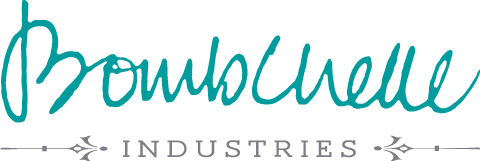So far in the Kickstarter series, we’ve covered:
- An overview of the campaign & the results
- A deep-dive into the content, social media, and other marketing that went into the campaign
- The PR and press the campaign received, and how I got it in front of those people
The first several posts in the series covered most of the useful takeaways, but I did want to close it off with a quick post on a few of the things I learned as a first-time physical product creator and what I’d do differently next time.
One note is that I did not have a huge budget (I had essentially a $300 budget, which went to the videographer). If I’d had 2-3x that money, I likely could have raised a lot more money – but it’s hard to say, because some of what I’d change looking back are strategic things, so putting more money into what I was already doing might not have resulted in exponentially better results.
If I’d had more money, I would have:
- Experimented with Twitter, Facebook, and Instagram ad campaigns. I didn’t do this because I was on such a tight budget and because, at least when I ran my campaign, there was no official way to track conversions from ads – the best you could do was track click-throughs. If I’d had more money to play with, I probably would have put $100-150 into ads and kept a close eye on CTR & referral traffic, but I don’t regret not doing this.
- Paid more for better product photos (or at least for a DIY photography set-up at home). Fairly self-explanatory – product photos are what sells your product, and having better photos would have upped the overall look and feel of the campaign page.
- Outsourced a lot of the research for PR and outreach efforts, and outsourced the social media scheduling. Individually hunting people down based on their Kickstarter name/email and matching that to a Twitter account is extremely time-consuming. I wouldn’t change it (as the thank-you tweets made a huge difference) but it took at least an hour a day and I know some days I spent two hours or more on it. Outsourcing the PR/outreach research would have let me email more people and spend more time perfecting my pitch.
If, like me, you’re operating on a shoestring budget, here’s where I’d recommend you put that money:
- The video (including the script, if you’re not a writer or have no marketing experience) should, hands down, be the biggest cost of your campaign. You don’t have to go wild here, but if you only have one thing to spend money on, this is it. My video was around $350, and which not as impressive as some videos, it obviously did the job. If you don’t know how to write a compelling pitch, hire someone who does (or gather your marketing-minded friends and bribe them into giving you constructive criticism).
- The campaign copy. Lucky for me, I’m a writer, so I didn’t have to pay out of pocket for this. I did go through several rounds of revisions based on feedback from trusted friends, though. If you’re not a writer, either hire someone to write your copy or hire someone to edit it.
- The product photos (and prototype). It’s always easier to sell people something when you have a physical product, in hand, that you can showcase on video (and throughout the campaign page, in photos). With the planners, I paid $40-50 for a one-off print on demand version specifically for the video and photos. (If you can’t pay for photos, never fear – these two articles have tips to drastically improve your at-home photos!)
The first thing I would have done differently: Outreach targeting
I pitched a lot of journalists throughout the campaign and aside from a handful of articles on smaller outlets, there wasn’t much traction.
My conclusion, after taking note that the CreativeBloq article was relatively easy to get and also drove a nice chunk of backers, is that I was pitching the wrong places. I wasn’t pitching big-name journalists?—?I know better than to start your PR strategy there?—?but I pitched a lot of small-to-mid-size contributors and columnists at places like Inc, FastCompany, etc., who had covered similar topics in the past.
If I could go back in time, I wouldn’t nix that entirely, but I would add a whole other category and put a lot of focus there: medium to large scale outlets that have a more specific audience than “people interested in business and business news.”
I’d create a list of outlets that had 50–250k followers on Twitter, who talk to people who are likely to be freelancers (designers, writers, coders/developers). Possibly the same with productivity focused sites (sites that write about productivity that are likely to have a lot of freelancers in the audience), but my focus would be on group #1. In general, I think the takeaway here is that niching down based on audience rather than on topic is likely to net better results. (I will be testing this the next time I run a campaign and reporting back!)
The second thing I would have done differently: Fix the #$%@ing shipping
Sweet merciful Zeus, shipping was a nightmare. Part of this is because Kickstarter’s export options don’t really play nice with ShipStation. Trying to figure it out on a Mac meant that I literally had to borrow a friend’s Windows PC to import the exported csv into the (Windows only) Stamps.com software, and then print the labels from that interface. Never. Again. (I’m hoping they’ve changed this process since mid-2015, but if not…be prepared for it to be a logistical clusterfuck.)
A much bigger part was that, being the ecommerce/shipping n00b I was, I fudged the numbers to make them even (free US shipping, $10 for international shipping) because I know that shipping is a huge deterrent to purchasing, figuring it would all wind up okay in the end. Friends: DO NOT DO THIS.

reenactment of me dealing with shipping costs
In my case, my planners are heavy little monsters (the larger one is over a pound and a half, the smaller one is around a pound). On top of that, there were several backers who ordered two or more planners. There were people who paid $45 with $10 shipping for two full-size planners and then here I am, paying $45 to ship nearly four pounds worth of planners to Australia.
Seriously. Get your shipping numbers right. Get a scale, weigh your prototype, and make sure that you have an accurate shipping cost for every backer tier. Build it into the cost (because shipping prices do make a difference) or charge for it, whatever, just cover your ass, because I’m here to tell you that it sucks when you don’t.
(I also know that all of this sounds like totally gross oversight to anyone who has experience with ecommerce and shipping physical products, but before this, I didn’t, and I know I’m not the only one, which is why I’m putting so much emphasis here.)
And…that’s really about it. Considering all of the factors (it being my first time crowdfunding, a tiny budget, less prep than normal, me being sick and straight off a breakup at the time) I’m very happy with how the campaign went.
It was a lot of work, though. Right now, I’m doing a preorder promotion to help fund the second round of printing, largely because I didn’t want to start 2017 off by working every day for two months straight. I do plan on going back for round two later this year (probably August/September) to fund a larger round of backstock and expand the line of products even more, during which I’ll be implementing these lessons learned and – hopefully! – have some new results and lessons to share.
Questions? Hit me up on Twitter – I’m happy to help!
Other posts in the Kickstarter series:
Behind the scenes of a successful Kickstarter: everything you wanted to know (part one)
Kickstarter behind the scenes, part two: Marketing
Kickstarter behind the scenes, part three: PR, press, & reviews
